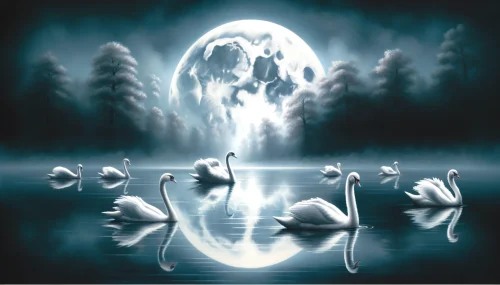In the pantheon of classical ballet, few works command the universal recognition and emotional depth of Pyotr Ilyich Tchaikovsky’s “Swan Lake.” Since its premiere, this ballet has not only become a cornerstone of the classical repertoire but also a profound testament to the human spirit’s capacity for expression through the language of music and dance. Tchaikovsky, a master of emotional depth and orchestral color, composed “Swan Lake” in the mid-1870s, during a period rich with artistic innovation and exploration.
The ballet made its first appearance on stage on March 4, 1877, at the Bolshoi Theatre in Moscow. Although this initial performance did not meet with acclaim—hampered by poor staging and choreography—it laid the foundation for what would eventually become the quintessential romantic ballet. The music, rich with lush orchestration and evocative themes, captured the hearts of audiences and set the stage for future revivals that would fully realize Tchaikovsky’s vision.
“Swan Lake” represents a quintessential blend of drama and beauty, with its narrative of magical transformations, tragic love, and the eternal struggle between good and evil. This ballet has transcended its initial lukewarm reception to become a beloved jewel in the crown of ballet, cherished by audiences around the world. Its significance in both ballet and classical music is not only a reflection of its artistic achievements but also of its ability to resonate across cultures and generations, remaining relevant in an ever-changing world.
Genesis of a Masterpiece
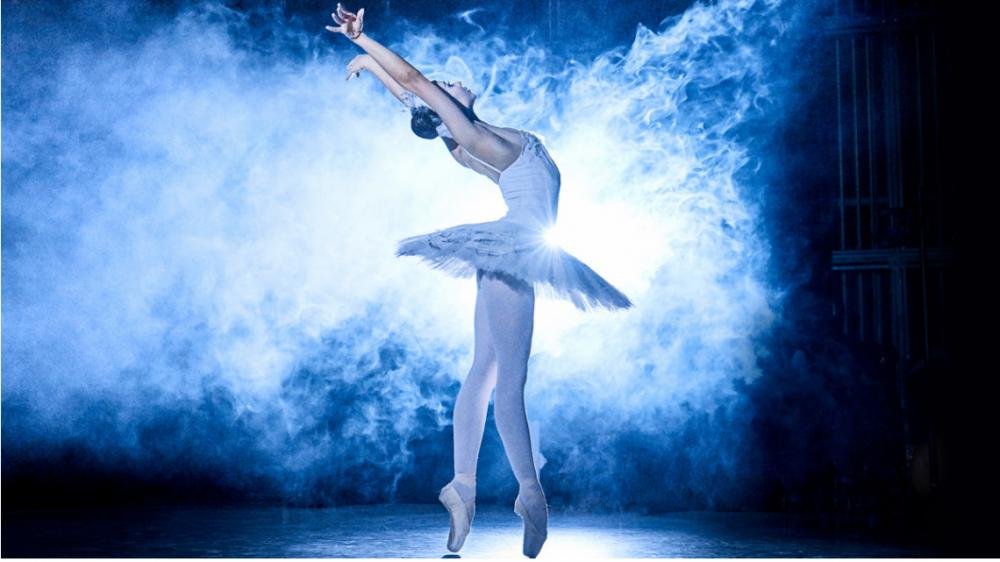
The creation of “Swan Lake” is steeped in the artistic ambitions and cultural aspirations of Russia’s theatrical elite. The Moscow Imperial Theatres, recognizing the burgeoning talent of Pyotr Ilyich Tchaikovsky, approached the composer in 1875 with a commission that would challenge the conventions of ballet music. Tchaikovsky, whose previous compositions had already begun to reshape the Russian musical landscape, embraced the opportunity to venture into ballet, a genre then ripe for innovation.
Tchaikovsky’s approach to composing “Swan Lake” was revolutionary. Rather than adhering strictly to the rhythmic and simplistic accompaniment typical of much ballet music at the time, he infused the score with rich orchestral nuances and complex harmonies. This not only elevated the music of ballet to a new level of artistic quality but also set a standard for future compositions in the ballet genre.
The Challenges
Despite the innovative nature of its music, “Swan Lake” faced significant hurdles in its early days. The ballet premiered on March 4, 1877, at the Bolshoi Theatre, but the initial reception was less than favorable. The choreography, crafted by Julius Reisinger, a relatively obscure ballet master, did not match the depth and complexity of Tchaikovsky’s score. Critics and audiences found the ballet’s structure confusing and the staging inadequate, elements that detracted from the overall impact of the performance.
Moreover, the demands of Tchaikovsky’s music posed a considerable challenge to the orchestra and dancers alike. The sophisticated rhythms and intricate passages were difficult for the performers to synchronize with the visual elements of the dance, leading to a lack of cohesion that further muddled the audience’s experience. These early performances did not hint at the legendary status “Swan Lake” would eventually achieve; rather, they exemplified the growing pains of a masterpiece in the making.
This challenging start marked a critical moment in the ballet’s history. It would take years and several reinterpretations to fully realize the potential of Tchaikovsky’s vision. The initial failures of “Swan Lake” inadvertently set the stage for its later triumphs, underscoring the ballet’s resilience and capacity for rebirth in the hands of visionary choreographers. These early struggles remind us that even the most enduring works of art often have humble, tumultuous beginnings.
The Narrative Ballet
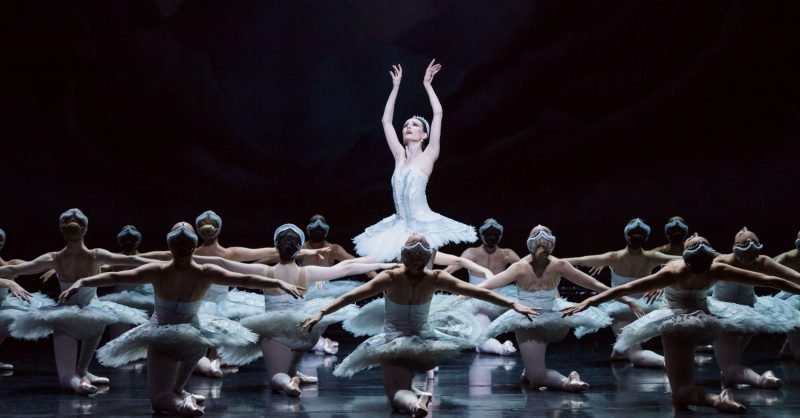
“Swan Lake” unfolds a poignant tale of romantic idealism, betrayal, and the quest for redemption, themes that resonate through its ethereal choreography and Tchaikovsky’s emotive score. The ballet tells the story of Odette, a princess turned into a swan by an evil sorcerer’s curse. Only at night can she regain her human form. The curse can only be broken by one who pledges true love to her.
Prince Siegfried, the story’s protagonist, encounters Odette during a hunting trip. Unaware of her true identity, he is immediately captivated by her grace and beauty. The narrative’s core revolves around Siegfried’s love for Odette, which is later tested by deceit when the sorcerer Von Rothbart tricks Siegfried into confessing his love to Odile, Odette’s doppelgänger, who appears at a royal ball.
The Themes
The themes of love, deception, and transformation are poignantly captured and enhanced by Tchaikovsky’s music. The leitmotif technique, where specific themes are assigned to characters and emotions, plays a crucial role. The recurring “Swan Theme,” for instance, is first introduced in Act II when Odette appears, its haunting melodies embodying her purity and sadness. This theme becomes a musical thread that runs through the ballet, enriching the narrative by deepening the emotional connection between the audience and the characters.
Tchaikovsky’s score also uses the transformative power of music to mirror the characters’ psychological depth and the plot’s progression. The dramatic crescendos and tender diminuendos not only underscore moments of tension and tenderness but also reflect the transformative journey of the characters. For example, the stark contrasts in the music during the royal ball in Act III effectively heighten the drama of deception when Siegfried is seduced by Odile, her theme twisted into a darker, more deceitful variant of Odette’s.
Moreover, the score’s ability to evoke a mystical atmosphere is instrumental in bringing the magical elements of the story to life, making the ballet’s world both enchanting and believable. Tchaikovsky’s innovative use of the orchestra helps to create a rich, immersive soundscape that transports the audience into the story’s fantastical realms.
Musical Innovations
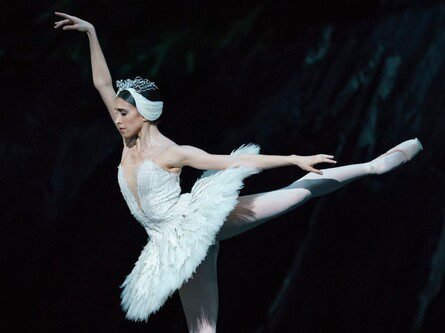
In “Swan Lake,” Pyotr Ilyich Tchaikovsky’s composition transcends the traditional boundaries of ballet music, weaving a complex tapestry of motifs and themes that not only enhance the narrative but also deepen the audience’s engagement with the characters and their emotional journeys. His musical innovations in “Swan Lake” are pivotal in defining the ballet’s character and atmosphere.
Key Motifs and Themes
The musical structure of “Swan Lake” is distinguished by its use of leitmotifs—recurring musical themes linked to specific characters, ideas, or emotions. Among the most iconic is the “Swan Theme,” a melody that encapsulates the essence of the swan maidens’ grace and fragility. This theme is first introduced in Act II with a series of gently undulating movements in the strings, creating a sense of floating and ethereal beauty that is synonymous with the swans’ appearances throughout the ballet.
Another significant motif is associated with the villain of the story, Von Rothbart. His theme is characterized by darker, more menacing tones, often played in a minor key with heavier orchestration. This musical contrast effectively sets the tone for the battle between good and evil, a central theme of the ballet.
Contribution to Character Development
Tchaikovsky’s music goes beyond mere accompaniment to actively shape the portrayal of characters. For example, Prince Siegfried’s themes often feature romantic and noble qualities, particularly in the brass and woodwinds, which reflect his royal status and youthful optimism. In contrast, the music accompanying Odile, Von Rothbart’s daughter, includes sharp and dynamic changes that mirror her deceptive and seductive nature.
The transformation scenes, where Odette transitions between her swan and human forms, are particularly notable. Here, Tchaikovsky employs a blend of harp glissandos and soft, lyrical passages that not only signal her physical changes but also evoke her vulnerability and the tragic beauty of her curse.
Overall Atmospheric Contribution
Tchaikovsky’s orchestration techniques significantly contribute to the ballet’s atmosphere. His use of the celesta in the “Dance of the Little Swans” is a perfect example, providing a delicate, almost magical quality to the scene. The inclusion of bold, dramatic brass and percussion during the scenes involving Von Rothbart helps to underscore the threat he poses, enhancing the ballet’s darker, more dramatic moments.
The interplay of major and minor keys throughout the ballet enhances the emotional depth of the narrative, reflecting shifts from hope to despair, from love to betrayal. This musical ebb and flow is pivotal in conveying the underlying tensions and emotional states of the characters, allowing the audience to experience the highs and lows of the story in a visceral way.
Through these musical innovations, Tchaikovsky not only set “Swan Lake” apart from contemporary works but also established a new standard for how music could be integrated into ballet. His compositions for “Swan Lake” are as much a narrative force as the choreography itself, making the ballet a richly immersive experience for all who witness it.
Cultural and Historical Context
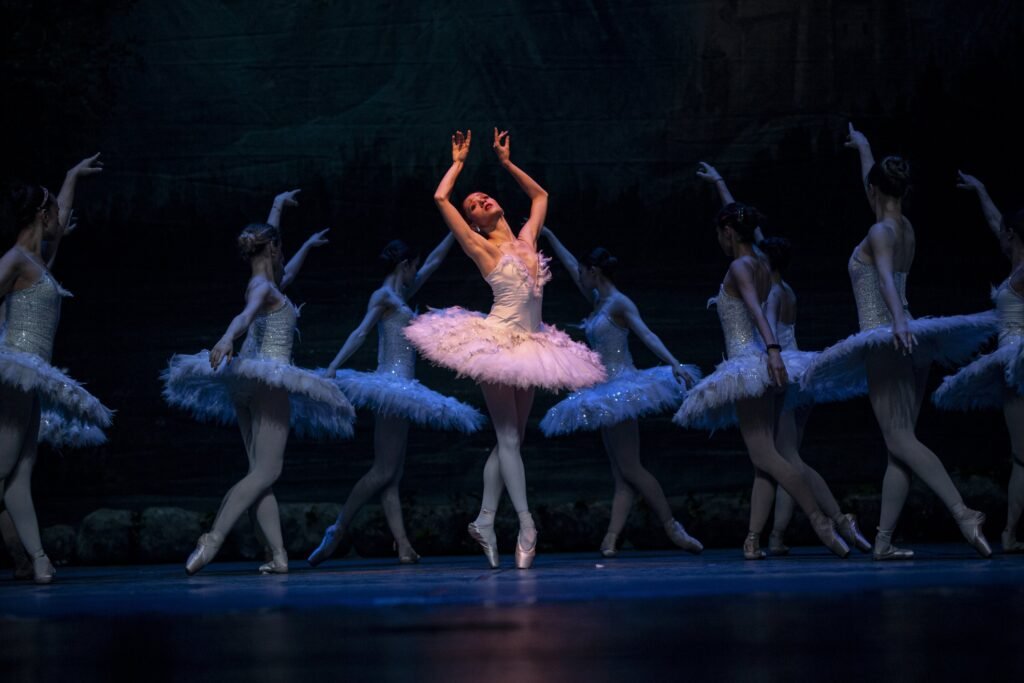
“Swan Lake,” composed in the late 1870s, emerges during a dynamic period of Russian cultural history, reflecting the evolving societal attitudes and artistic movements of the time. This ballet, while deeply rooted in the traditions of Russian folklore and myth, also aligns with the broader European romanticism that emphasized emotion, nature, and the supernatural.
Reflection of the Late 19th Century Russia
In the late 19th century, Russia was undergoing significant social and cultural changes. The country was grappling with the push for modernization and the tension between maintaining its unique cultural identity and integrating Western European influences. The arts, including music and ballet, became a field where these dynamics played out vividly. Russian composers and choreographers sought to assert a distinct nationalistic style that drew heavily from Russia’s rich tradition of folklore and mythology. “Swan Lake” embodies this spirit through its incorporation of Russian folk themes and its narrative, which draws from traditional fairy tales featuring enchanted swans and evil sorcerers.
Moreover, the era was marked by a fascination with the mystical and the otherworldly, aspects that are central to the story of “Swan Lake.” The ballet’s exploration of themes such as transformation, love beyond death, and redemption through suffering resonated with the romantic ideals prevalent at the time. These themes were not only reflective of the romantic fascination with the tragic and the supernatural but also echoed the societal yearning for transcendence and the exploration of deeper spiritual truths.
Alignment with Artistic Movements
The aesthetic preferences of the late 19th century leaned towards elaborate and expressive forms of art. In ballet, this translated into a preference for stories that could be dramatized through elaborate dance sequences and rich musical accompaniment. Tchaikovsky’s score for “Swan Lake” was revolutionary in its complexity and emotional depth, pushing the boundaries of what ballet music could convey. His approach to “Swan Lake” was very much in line with the romantic composers of the time, who were exploring the capabilities of orchestral music to evoke deeper emotional responses from their audiences.
The ballet’s initial mixed reception also reflects the shifting tastes and the challenges inherent in introducing innovation within traditional frameworks. While Tchaikovsky’s music was ahead of its time, combining complex harmonies and rich textural compositions, the choreography initially failed to match its depth. It was not until the 1895 revival, with choreography by Marius Petipa and Lev Ivanov, that “Swan Lake” was fully realized as a masterpiece, demonstrating how the integration of music and choreography could elevate ballet to high art.
Societal Impact
“Swan Lake” has since transcended its initial context to become a universal story of love and sacrifice. Its endurance and popularity highlight not only its initial relevance but also its ongoing resonance with audiences worldwide. The ballet’s themes of enduring love and the struggle between good and evil continue to find new interpretations and relevance in different cultural contexts, reflecting universal human experiences and emotions.
In placing “Swan Lake” within the cultural and historical tapestry of the late 19th century, we see how it mirrors the artistic and societal shifts of its time while also offering a timeless narrative that continues to captivate and inspire. Its blend of traditional folklore with innovative musical and choreographic techniques makes “Swan Lake” a landmark in the evolution of ballet as an art form, and a poignant reflection of the human condition.
Enduring Popularity and Legacy
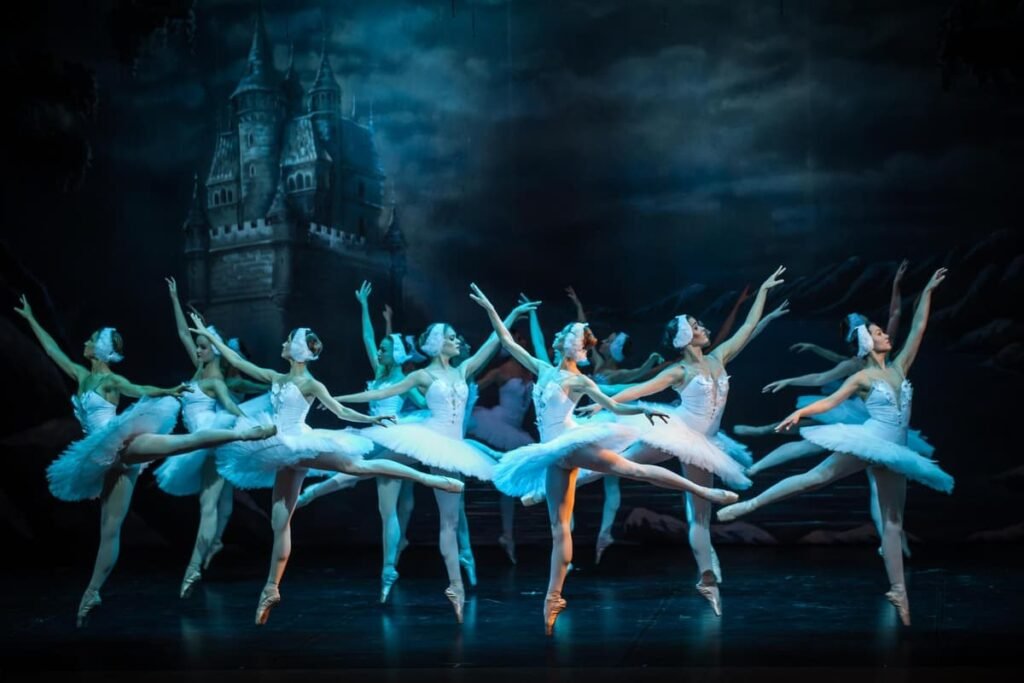
“Swan Lake” stands as one of the most revered works in the ballet repertoire, captivating audiences for over a century with its intricate choreography, profound music, and timeless narrative. Its enduring popularity is rooted in several key factors that transcend cultural and temporal boundaries, establishing it as a cultural icon not only within ballet but across various forms of media.
Universality of Themes
At the heart of “Swan Lake”‘s enduring appeal is its exploration of universal themes such as the triumph of love over deceit, the struggle between good and evil, and the quest for redemption. These themes resonate across different cultures and epochs, offering each new generation a lens through which to explore fundamental human experiences. The ballet’s emotional depth, underscored by Tchaikovsky’s powerful score, allows it to reach a broad audience, conveying complex emotional and moral dilemmas through the universal language of music and dance.
Adaptability and Interpretation
“Swan Lake” has proven remarkably adaptable, with countless interpretations and stagings that reflect varying artistic visions and cultural contexts. Each production can highlight different aspects of the story, from focusing on the romantic elements to exploring the darker themes of magic and betrayal. This flexibility has allowed choreographers and directors to keep the ballet relevant and engaging for contemporary audiences, demonstrating its capacity to evolve while maintaining its core narrative and aesthetic appeal.
Influence on Modern Ballet
“Swan Lake” has significantly influenced the development of modern ballet by setting standards for ballet music and choreography that continue to inspire ballet companies worldwide. Its integration of music, narrative, and dance has served as a model for how ballets can convey a cohesive and compelling story through purely visual and auditory means. Modern choreographers, even when creating contemporary works, often reference the technical and expressive benchmarks established by “Swan Lake.”
Cultural Icon in Media
Beyond the world of dance, “Swan Lake” has permeated popular culture, becoming a symbol of ballet in the collective imagination. Its music and motifs have been featured in numerous films, television shows, and books, often used to evoke a sense of beauty, elegance, or melancholy. Notable examples include its use in movies like Black Swan, which explores the psychological pressures of professional ballet, and Billy Elliot, where it represents the protagonist’s aspiration and emotional expression. The ballet’s themes and visuals also appear in advertising, visual art, and children’s literature, further cementing its status as a cultural icon.
Legacy
The legacy of “Swan Lake” is not just in its artistic achievements but also in its capacity to inspire and move audiences. It remains a staple in the repertoires of ballet companies around the world, each performance an opportunity to introduce new audiences to the beauty of ballet. Aspiring dancers often dream of performing in “Swan Lake,” viewing it as a pinnacle of ballet achievement and a profound artistic challenge.
In conclusion, the enduring popularity of “Swan Lake” lies in its profound emotional depth, its universal themes, and its capacity for adaptation and reinvention. It continues to influence the arts and retains its relevance and appeal, proving that great art can transcend the specifics of its time and place to touch the hearts and minds of audiences everywhere.
